MOVIE REVIEW – Forty-five years after Apocalypse Now secured him the Palme d’Or, the iconic director returns with a deeply personal, yet disjointed allegory that explores his relationship with art. While grand in scale, the film frequently feels scattered, struggling to strike a balance between personal turmoil and timeless human themes. Coppola takes a brave creative leap, reflecting both his career and the vast ideas he’s accumulated over the years. It’s an artistic venture that at times enthralls, but often stumbles in execution.
The project, which has been in development for decades and is now titled Megalopolis, places Coppola’s name prominently on the marquee, modestly labeling the film “A Fable.” Yet calling this loud, overstuffed colossus a mere fable dramatically undervalues its sprawling insights into art, life, and legacy. Here we have Coppola, reportedly investing $120 million of his own fortune into a project that both audiences and critics have long admired him for—a gigantic, recklessly ambitious epic, where the eternal themes of human existence—greed, corruption, loyalty, and power—threaten to overshadow a far more intimate personal crisis. In this story, a conservative politician and a progressive urban planner battle over the future of a mythical city, with predictably messy results.
Why Did Megalopolis Need to Be So Large?
Coppola’s finances are his own to handle, but despite the film’s grandiose title, it’s unclear why Megalopolis had to be realized on such a massive scale. For the Cannes Film Festival premiere, Coppola insisted the film be shown on the city’s only IMAX screen. And yet, much of the film is composed of close-up shots, which would work just as well on an iPhone (with the exception of an odd moment where a character steps forward, faces the audience, and speaks directly into a microphone). The cast is first-rate, featuring rising stars like Adam Driver and Aubrey Plaza alongside Coppola veterans Laurence Fishburne and Giancarlo Esposito—though their performances often feel oddly exaggerated. As one character says in the film, “When we leap into the unknown, we prove our freedom.”
It’s been thirty years since Coppola’s last notable work, Dracula, and many in Cannes hoped for another Apocalypse Now, which won him the Palme d’Or 45 years ago. However, it soon becomes apparent that world-building—a crucial element for 21st-century Hollywood franchises—might not be Coppola’s strong suit. Oddly enough, animation (instead of effects-heavy live-action) could have been a better medium for this story, allowing a more seamless blend between Shakespearean gravitas and absurdity, like when a browless Shia LaBeouf quips, “Revenge is best served while wearing a dress.” Animation would also have given Coppola more control over the setting, a blend of modern New York, ancient Rome, and Pandora’s forests—a world where shallow entertainment distracts from deeper concerns.
Smart Cities, Messy Reality
In places like China and Saudi Arabia, leaders have aimed to create forward-thinking “smart cities” from scratch. However, vibrant cities typically aren’t built this way. Instead, they rise, burn, and are rebuilt, often slowly, with plenty of criticism along the way—usually thanks to visionary urban planners like Robert Moses (New York) and Georges-Eugène Haussmann (Paris). Cesar Catilina, the fictional urban planner in Megalopolis, is one of these visionaries, attempting to drag New Rome into the future. Driver brings an intense, single-minded energy to the role, not unlike Howard Roark, the uncompromising architect in Ayn Rand’s The Fountainhead.
Much like these evolving cities, Megalopolis is awe-inspiring in some places and a complete eyesore in others—until you take a step back and look at it as a whole. Only then do you see how awkwardly old and new concepts crash into one another, like an Art Deco skyscraper wedged between a cathedral and a Starbucks. The film begins with Catilina stepping off the Chrysler Building and commanding time to stop—and it does. Floating some 70 to 80 stories above New Rome’s streets, the scene evokes not Plutarch (who chronicled the Catiline Conspiracy, which loosely inspired Coppola) but the Wachowskis. This time-freezing Matrix move—right after a Laurence Fishburne-narrated prologue—suggests a far more fantastical film than what ultimately follows.
Megalopolis isn’t quite the sci-fi spectacle some claim; it’s more like a sexless Caligula, set in a futuristic Rome. Cinematographer Mihai Malaimare Jr. envisions a sleek neo-noir/neo-classical city that looks like modern-day Manhattan, except the men wear bowl cuts, and the women are draped in sheer robes. These toga-like garments are either made of gauze or an innovative, all-purpose building material called Megalon, which Catilina has discovered and uses as the linchpin for his urban redevelopment plan. Standing in his way is Mayor Franklyn Cicero (Esposito), a former slumlord-turned-politician. The two face off at a high-concept press conference, where most of the key players—Jon Voight as the obscenely wealthy oligarch Hamilton Crassus III and Plaza as the manipulative TV personality Wow Platinum—navigate catwalks suspended above a scale model of the city. Franklyn wants to build a casino, while Catilina envisions a “perfect school-city” that can grow alongside its people.
Love and Conflict in the Ruins
To make these competing visions even more complicated, Coppola introduces Franklyn’s adult daughter, Julia (Nathalie Emmanuel), a pampered party girl constantly in the limelight who undergoes a revelation after witnessing Catilina “stop” a building demolition—by literally freezing time. (Coppola conceived this film decades ago but abandoned an earlier version in the wake of the 9/11 attacks.) The film’s iconography and worldview seem stuck in a pre- and post-9/11 limbo. What might have felt “too soon” back then now feels frustratingly outdated in light of today’s societal challenges, despite a few nods to Donald Trump and the January 6th riots (including a Confederate flag-waving mob).
Cicero is displeased that his daughter has aligned herself with Catilina’s redevelopment plan. He’s even more outraged when Julia falls in love with the same man he once prosecuted for his wife’s unsolved death. This subplot introduces ambiguity into Catilina’s otherwise heroic persona. As the film progresses, it becomes clear that Coppola sees himself in both Cicero (whose first name, Franklyn, is a stand-in for Francis) and Catilina, the visionary artist-architect with ambitions reminiscent of Coppola’s ill-fated One From the Heart Zoetrope Studios project. Family is essential to both men, just as it is to Coppola, while atoning for infidelity and restoring a “bad boy” reputation is part of Catilina’s arc. Their power struggle pales next to HBO’s masterful Succession, though the film digs deep into what drives these larger-than-life characters. “When we ask these questions, when we engage in dialogue about them, that’s utopia,” Catilina says.
Where Satire Meets Drama
At times, Coppola infuses delightful bawdiness and unexpected moments into his “fable,” preventing it from becoming too sentimental. Plaza and LaBeouf’s scenes bring a satirical edge that recalls Richard Kelly’s Cannes disaster Southland Tales, where comedians and offbeat celebrities like Dwayne Johnson and Justin Timberlake were cast to heighten the absurdity.
By contrast, most of Coppola’s cast consists of “serious” actors, lending the film a stiff, almost theatrical tone, while Driver, who excels at portraying internal torment, taps into the deep emotional wells he drew on in the Star Wars movies. When Catilina steps onto a massive clock face floating high above New Rome and rages at the obstacles in his path, he is not unlike a brooding Kylo Ren.
And yet, aside from Megalon (which sounds suspiciously like James Cameron’s laughable “Unobtanium” from Avatar), the sci-fi elements here don’t stray far from reality. At one point, characters mention a Soviet satellite dumping radioactive debris on the city, and while Coppola shows this event, it’s never referenced again. Perhaps the budget couldn’t stretch that far, which might also explain why there’s little screen time devoted to Catilina’s elaborate urban project—though Coppola clearly didn’t skimp elsewhere. Take the wedding scene, which is vastly different from the one that opens The Godfather. Here, Madison Square Garden is transformed into a decadent Roman arena, with Ben-Hur-style chariot races playing alongside Grace VanderWaal’s Taylor Swift-like original song, “My Pledge.”
Most city movies take us through the streets—Sidney Lumet’s specialty—but Coppola takes us to the city’s highest skyscrapers or onto beams floating above the glowing horizon, where it’s always magic hour. Coppola has made four masterpieces—The Godfather, The Conversation, The Godfather Part II, and Apocalypse Now—and then built a fortune from his vineyards. He’s seen the world from the top, rubbed shoulders with the elite, and made his share of mistakes. Rather than retire in luxury, Coppola has chosen to share this message, part mission statement, part mea culpa. Megalopolis is anything but lazy, and while many of its ideas don’t land as intended, it’s the kind of late-career manifesto fans have been waiting for from the maverick director who never lost faith in cinema. But now that he’s built it, will they come?
-Herpai Gergely “BadSector”-
Megalopolis
Direction - 6.2
Actors - 7.3
Story - 5.2
Visuals/Music/Sounds - 7
Ambience - 6.4
6.4
FAIR
Coppola's Megalopolis is a sprawling, yet somewhat clumsy film that stretches its artistic ambitions beyond practical limits. While the visual design and the cast are impressive, the film’s themes and narrative often feel disjointed. It’s the work of an indefatigable director who remains devoted to his craft, but perhaps aimed to accomplish too much all at once.

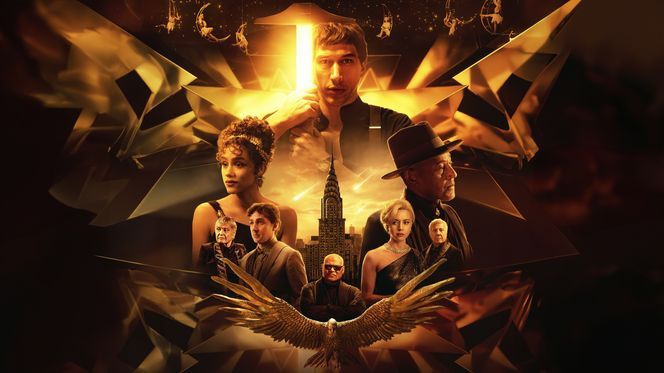
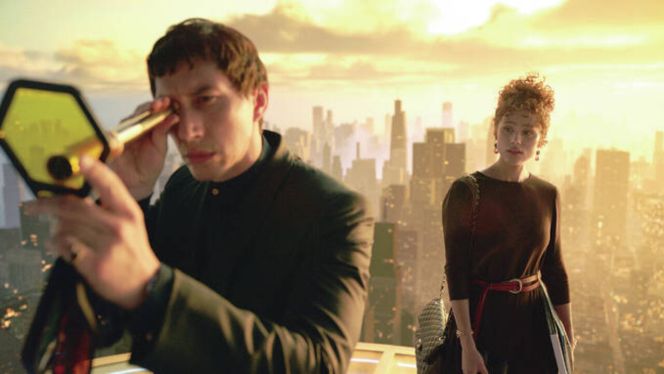
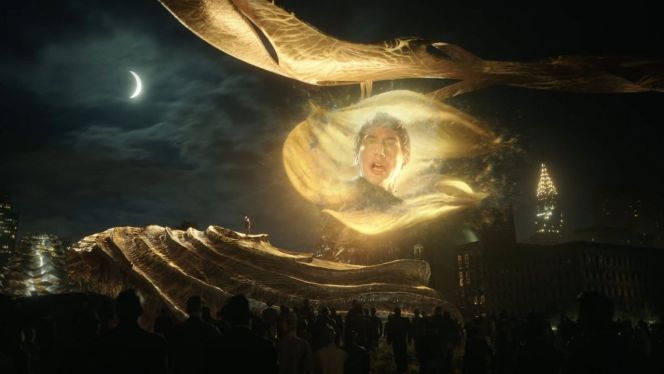
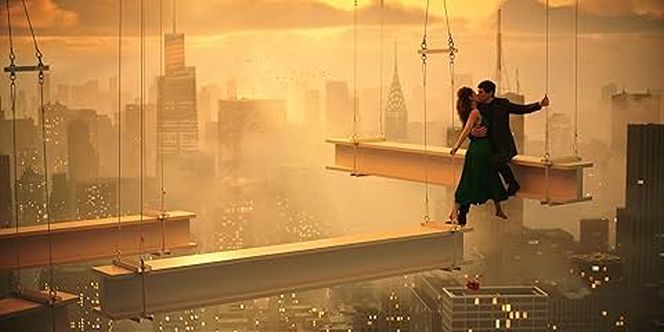
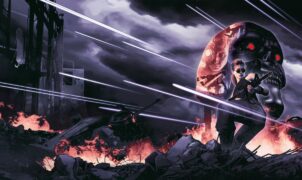


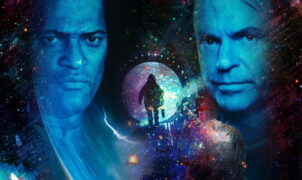






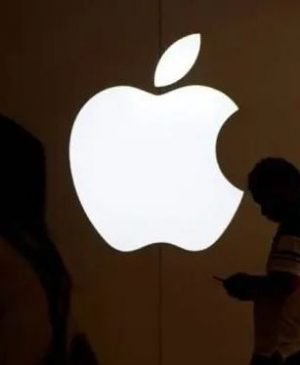



Leave a Reply